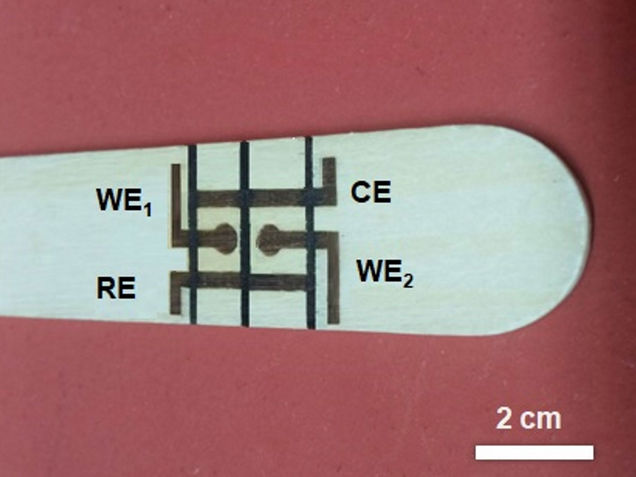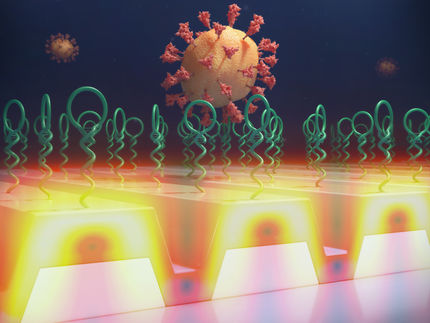Say ‘ahhh’: This ecofriendly tongue depressor checks vitals
Doctors often use tongue depressors when peering in a patient’s mouth and throat. But what if that flat wooden spatula could actively evaluate the patient’s health? That’s the premise of an ecofriendly disposable sensor, reported in ACS’ Analytical Chemistry, that can check levels of glucose and other biomarkers in saliva. Researchers say the easy-to-produce device could someday help doctors assess a range of conditions.

Electrochemical cells etched by a laser on a wooden tongue depressor can measure glucose and nitrite levels in saliva. (WE = working electrode, CE = common counter electrode, RE = common reference electrode)
Adapted from Analytical Chemistry, 2023, DOI: 10.1021/acs.analchem.3c01211
Wood is a renewable, biodegradable, natural material that is widely available at low cost, which makes it attractive for researchers who design electronics and sensors. However, this is challenging because the material isn’t good at conducting electricity. One solution is to use wood as a passive substrate and then coat it with metals and carbon-based inks. Alternatively, high-power lasers can char specific regions on the wood, turning those spots into conductive graphite. But this complicated technique requires sophisticated and expensive instrumentation, an oxygen-free atmosphere and fire retardants. To develop a cheaper and easier process, Christos Kokkinos and colleagues turned to low-power diode lasers, which have already been successfully used to make polyimide-based sensors but haven’t previously been applied to wooden electronics and electrochemical sensors.
The team used a portable, low-cost laser engraver to create a pattern of conductive graphite electrodes on a wooden tongue depressor, without the need for special conditions. Those electrodes formed two electrochemical cells separated by lines drawn with a water-repellent permanent marker. The biosensor was then used to rapidly and simultaneously measure concentrations of nitrite and glucose in artificial saliva. Nitrite can reveal oral diseases, such as periodontitis, while glucose can serve as a diagnostic for diabetes. The researchers say these low-cost devices could be adapted to detect other saliva biomarkers and would be quick and easy to produce on-site at medical facilities.
Original publication
Other news from the department science
These products might interest you

Octet R2 / Octet R4 / Octet R8 by Sartorius
Full power on 2, 4 or 8 channels: Label-free and GxP-compliant analysis of molecular interactions
Innovative label-free real-time protein quantification, binding kinetics and rapid screenings

Octet RH16 and RH96 by Sartorius
Efficient protein analysis for process optimisation and manufacturing control in high-throughput
Label-free protein quantification and characterization of protein-protein interactions

Octet SF3 by Sartorius
Surface Plasmon Resonance (SPR) using Single Dynamic Injections for Kinetics and Affinities
Curvature is Key - Adding a ‘Third Dimension’ to the Binding Curve

Get the life science industry in your inbox
By submitting this form you agree that LUMITOS AG will send you the newsletter(s) selected above by email. Your data will not be passed on to third parties. Your data will be stored and processed in accordance with our data protection regulations. LUMITOS may contact you by email for the purpose of advertising or market and opinion surveys. You can revoke your consent at any time without giving reasons to LUMITOS AG, Ernst-Augustin-Str. 2, 12489 Berlin, Germany or by e-mail at revoke@lumitos.com with effect for the future. In addition, each email contains a link to unsubscribe from the corresponding newsletter.


















































